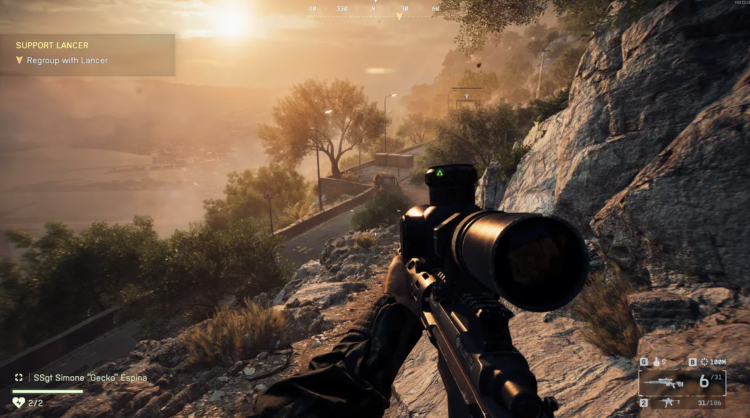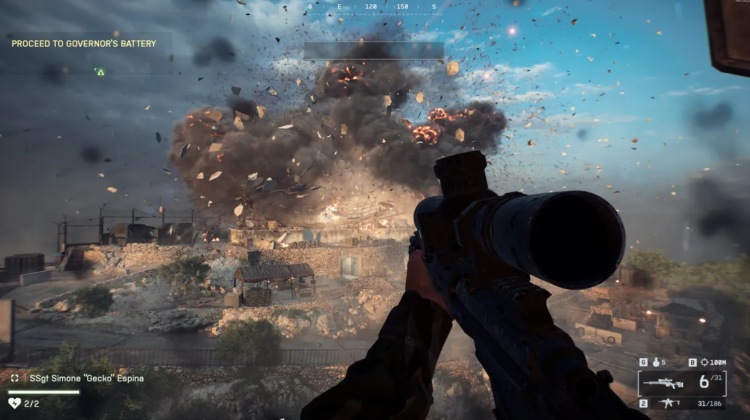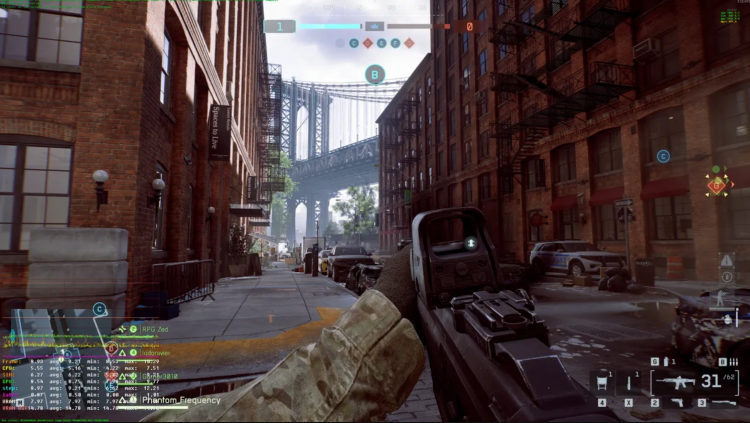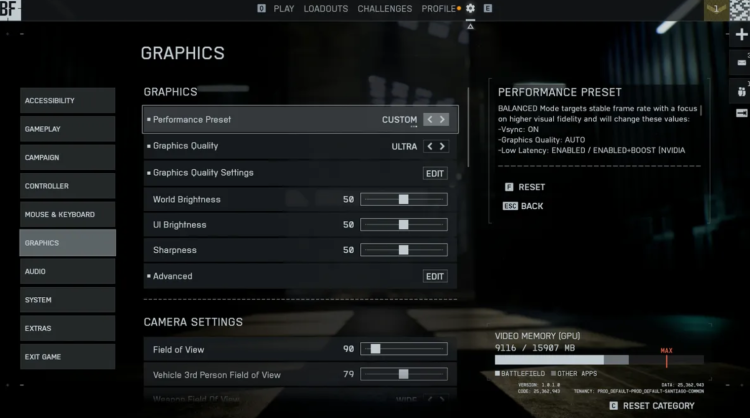Battlefield 6 Is a Masterclass in Optimization: Smooth Frames, Strong Visuals, and Wide GPU Support
Battlefield 6 has arrived with a performance focus rarely seen in modern AAA releases. Instead of chasing the bleeding edge of graphics technology, EA and Battlefield Studios have prioritized stability and accessibility. The game avoids the usual heavy dependence on ray tracing, favoring a baked lighting system that balances visuals with raw performance. Early testing shows that Battlefield 6 runs surprisingly well across both mid-range and high-end hardware, offering smooth gameplay even without upscaling tools like DLSS or FSR enabled.
The developers have made their stance clear: optimization over unnecessary graphical complexity. Minimum specs include the older RTX 2060 and AMD RX 5600 XT for 1080p at 30 fps, a specification that stands out in a year where several high-profile releases have struggled to deliver playable frame rates on anything less than flagship GPUs. For players running modest setups, this approach is a relief.
Tests conducted on the RTX 4070 and RTX 5070 Ti show Battlefield 6 performing well beyond expectations. On the RTX 5070 Ti, the game achieves more than 60 fps at 4K native resolution without any upscaling or Frame Generation. At 1440p with Frame Generation enabled, frame rates soar past 250 fps, indicating substantial headroom even in demanding environments. The RTX 4070 also handles the game efficiently, maintaining a 56 fps average at 4K Ultra settings and reaching over 100 fps at 1440p without DLSS assistance. At 1080p, Battlefield 6 consistently runs above 130 fps, confirming how well-optimized the Frostbite engine has become for modern systems.
Read about Battlefield 6’s huge debut on Steam here.
Below is a breakdown of Battlefield 6’s Frame Generation performance on different GPUs tested in controlled conditions:
| GPU Model | Resolution | Settings | Frame Generation | Average FPS |
| RTX 5070 Ti | 1440p | Ultra | Enabled | 251 |
| RTX 5070 Ti | 4K | Ultra | Disabled | 80 |
| RTX 4070 | 1440p | Ultra | Disabled | 100 |
| RTX 4070 | 1080p | Ultra | Disabled | 136 |
| RTX 4070 | 4K | Ultra | Disabled | 56 |
Battlefield 6 features a comprehensive graphics settings menu. Players can select between Performance and Graphics Quality presets, with detailed control over textures, meshes, shadows, reflections, and more. Beyond the standard options, the game includes an Advanced tab housing DLSS, FSR, and XeSS upscaling methods. DLSS 4 with Multi Frame Generation is supported for Nvidia cards, while AMD users benefit from FSR 3.1, with FSR 4 expected at launch. Intel’s XeSS is also present in its latest version. These additions position Battlefield 6 as one of the most future-ready titles of the year, offering nearly every major upscaling solution available.

The graphics presets range from Low to the humorously named “Overkill” setting. However, tests show minimal visual differences between Ultra and Overkill, despite the latter cutting frame rates nearly in half on 4K displays. For most users, Ultra remains the optimal balance between fidelity and performance. The Overkill preset, while visually impressive in theory, appears more like a testbed for enthusiasts with top-end cards like the RTX 5080 or RTX 5090.
Battlefield 6’s built-in performance overlay deserves particular attention. It provides players with frame rate data, frame time graphs, and performance metrics in real time. Reviewers have noted that this is one of the most advanced performance monitoring tools ever integrated into a game. Combined with quick shader optimization on first launch, Battlefield 6 runs almost entirely stutter-free. In multiple hours of testing, only one micro-stutter was observed—a negligible issue considering the scale of the game’s environments.
Critics have pointed to Battlefield 6’s single-player campaign as its weakest element, with IGN’s Simon Cardy calling it a “safe, dull reimagining of what Battlefield once was, rather than a bold reinvention.”
The campaign and multiplayer modes share similar levels of performance, though scripted sequences at the beginning of missions can temporarily lower frame rates before stabilizing once gameplay begins. Despite the occasional dip in cutscenes, gameplay itself remains consistently smooth across all tested hardware. The updated Frostbite engine handles large-scale destruction without major performance loss, even when entire structures collapse during combat.

In terms of visuals, Battlefield 6 delivers some of the most striking environments seen in a multiplayer shooter. Lighting, particle effects, and environmental detail stand out even without ray tracing enabled. The absence of hardware-based ray tracing is compensated by finely tuned baked lighting and robust shadow mapping. As a result, the game maintains visual depth without burdening GPUs with excessive workloads. Reviewers have described the in-motion presentation as “truly stunning,” highlighting that static screenshots fail to capture the fluidity of its scenes.
Battlefield 6’s environmental reactivity adds to its appeal. Debris, destructible cover, and dynamic weather systems contribute to the sense of realism while remaining stable under stress. Even during large-scale explosions or collapsing structures, frame rate drops are minimal. This consistency extends to sound design, with impactful weapon audio and ambient effects enhancing the immersion.
Performance testing suggests that CPU demand is moderate. The Ryzen 7 7700X, an eight-core processor, handles the game effortlessly, suggesting that even slightly older CPUs can maintain smooth frame rates. Players using legacy chips may experience minor drops during intense physics events, but the overall optimization ensures stability across configurations.

After a year of uneven PC ports and unstable launches, Battlefield 6 represents a rare example of a blockbuster game built to run efficiently on a wide range of systems. The updated Frostbite engine, combined with scalable settings and modern upscalers, provides flexibility for both high-end and mid-range players. Whether targeting 60 fps at 4K or over 100 fps at 1440p, Battlefield 6 adapts smoothly to available hardware.
The data underscores Battlefield 6’s scalability and efficient use of Frame Generation. Even without AI-enhanced upscaling, the frame rates are competitive with top-tier shooters released this year. With Frame Generation active, performance on supported GPUs nearly doubles, particularly in 1440p scenarios.
EA and Battlefield Studios’ focus on delivering a well-optimized shooter appears to have paid off. The game’s technical performance, wide hardware compatibility, and balanced visual quality make it accessible to players who don’t own the latest GPUs. The developers’ decision to move away from ray tracing as a default feature has resulted in smoother, more reliable gameplay experiences across the board.

With stable frame times, quick loading sequences, and highly responsive controls, Battlefield 6 demonstrates what can be achieved when performance is prioritized over excessive visual effects. The updated Frostbite engine not only scales efficiently across hardware but also maintains fidelity and immersion without sacrificing speed. For PC players, Battlefield 6 stands out as one of the most polished and well-optimized releases of 2025.
Source: PC Gamer

Comments